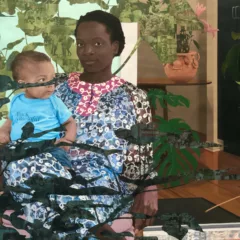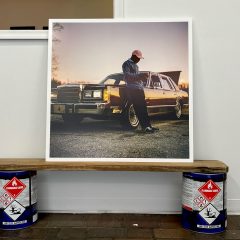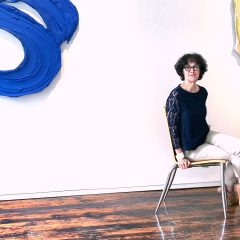[Alex connects with a show of contemporary work by gay and queer artists, noting that social media has become more than just a means of self-promotion in this sphere. — the Artblog editors]
Interface: Queer Artists Forming Communities through Social Media provides a thorough overview of contemporary, gay artists whose work is informed by and supported by the use of Tumblr, Instagram, and Facebook. Combining a diverse range of media and artists, the latest show at the Leslie Lohman Museum of Gay and Lesbian Art focuses on a particular New York scene–one I have become familiar with through my own personal involvement with social media.
Finding fame online

A grouping of four Polaroids by photographer Benjamin Frederickson, depicting young men in compromising sexual situations, uses an analog method to capture the quick nature of today’s gay hook-up culture, aided by apps like Grindr. In fact, Fredrickson meets many of his subjects through such apps, and his experience as a sex worker is reflected in these intimate windows into the private lives of the modern homosexual. His work certainly pays homage to the photography of Robert Mapplethorpe, Peter Hujar, Nan Goldin, and David Wojnarowicz, who tried to preserve the legacies of their own friends and lovers during the height of the AIDS epidemic.
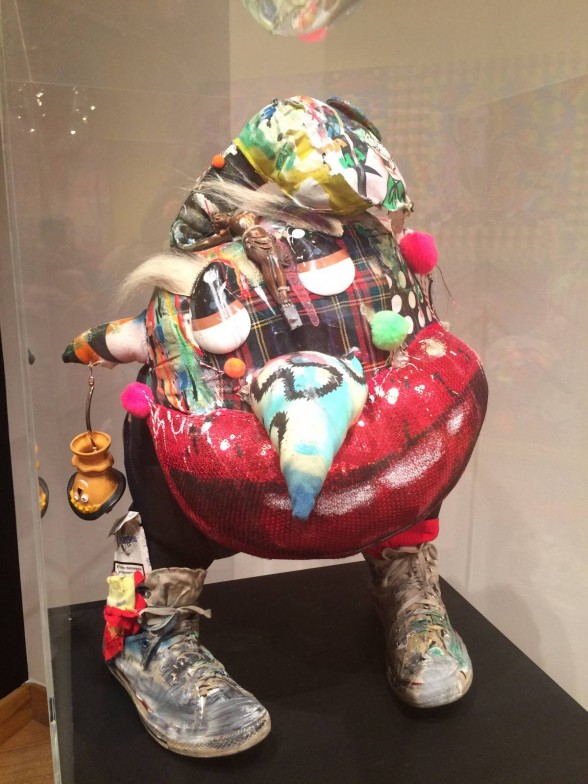
Some know Scooter LaForge for his ugly-cute, hand-painted T-shirts sold at such iconic New York establishments as Patricia Field, but he was discovered on Tumblr, posting his creations and gaining fans through likes and reblogs. His assemblage sculpture, “El Payaso (The Clown)” (2012-15), sums up his approach to object-making, mixing found objects, textiles, and children’s imagery to create a product that could be mistaken for refuse, but so endearing it is hard not to love the little misfit. LaForge’s work is not meant to hang on a wall in austerity, but disrupt space and create a scene.
The photographs of Slava Mogutin and drawings of his partner Brian Kenney, as well as those of Gio Black Peter, work in similar ways, and have also circulated initially through similar means, shared through the Tumblr universe and queer art blogs.
Invitations to party–or reflect
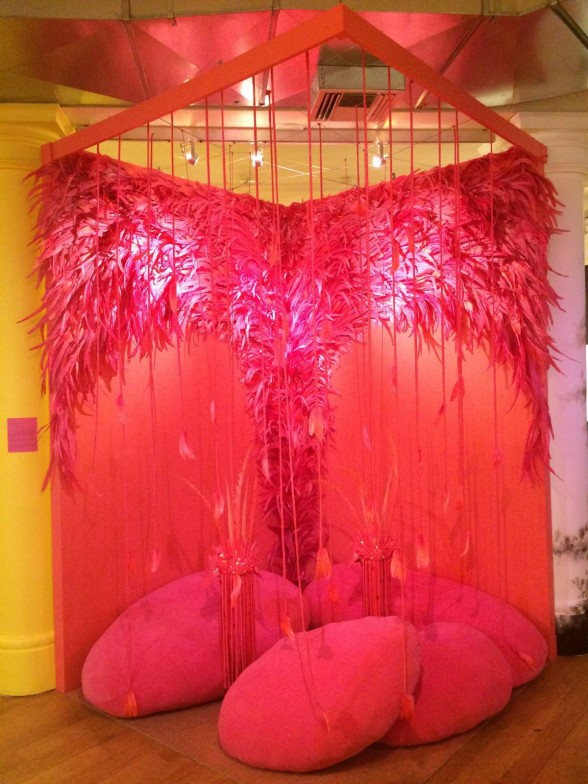
Peruvian-born, Miami-raised Diego Montoya resents the lack of physical interaction brought about by social media in his installation, “Future Ritual II: Alone Together” (2015) which is meant for new forms of intimacy. The campy “lounge” is filled with hot-pink beanbags, feathered walls, and hanging curtains, the perfect spot for a kiki or tryst. It embraces the most flamboyant, stereotypical parts of queer creation: theatrical sets, making costumes, and the artifice of parades and nightclubs, while giving off a nostalgia for an era of tea dances and disco hedonism.
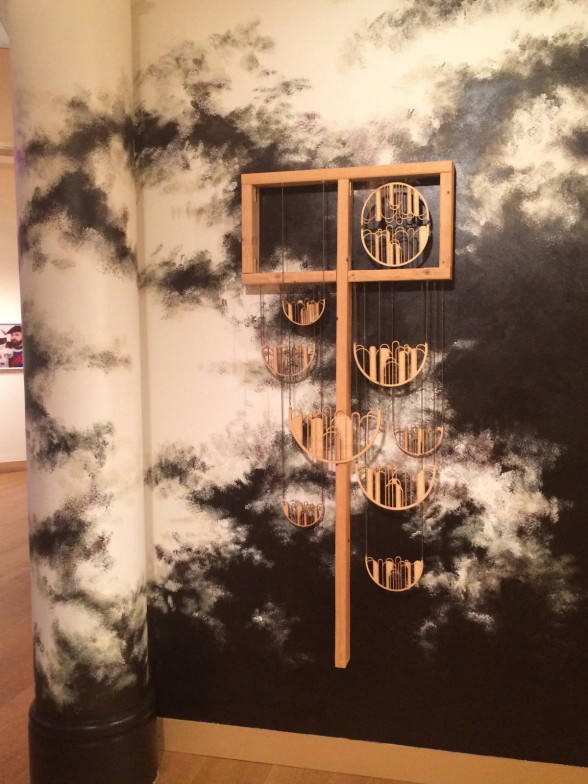
Walt Cassidy, former Club Kid-turned-jewelry-maker, presents another queer astral plane with his installation, “The Fruit Tree” (2013). Made of bronze and laser-cut wood panes of intricate, geometric design, in front of a painted backdrop of dark smoke, the work has very few explicit visual references to the LGBT community or even social media, but this fantasy landscape provides a contemplative space for the viewer, and shows the meticulous creation of an individual aesthetic through adapted jewelry-making practice and use of existing architecture.
I must give an honorable mention to the graphic paintings of Naruki Kukika, whose “Totem Pole” and “Chomolungma” (2013) depict various scenes of anal penetration, taken directly from the impossible shots found in Internet pornography, and the portrait painting of George Towne, whose “Nando-Fire Escape” (2015) is included in the show. While these works are located on the fringe of the gallery space, and have little to do with the theme other than that both artists use social media as a means of promotion, these paintings are polished and show the artists’ accomplishment in their medium.
While I was starstruck by the names I have become so familiar with, the most impressive part of this show was the way in which these artists have utilized social media in branding themselves and promoting their work. In the past, the work of so many queer artists did not live beyond the memory of their individual communities, only to be valued in past tense. When these artists, and so many others, are able to share their experiences more widely, it is a means of preservation and longevity; the contemporary queer artist’s oeuvre can be tracked not through a formal catalogue raisonne, but through the infinite scroll. And while these specific platforms may not exist years from now, it is certain that queer community will always have a place in the vast melting pot of the Internet.
Interface: Queer Artists Forming Communities through Social Media will be up until August 2, 2015 at the Leslie Lohman Museum of Gay and Lesbian Art, 26 Wooster St., New York, NY.



